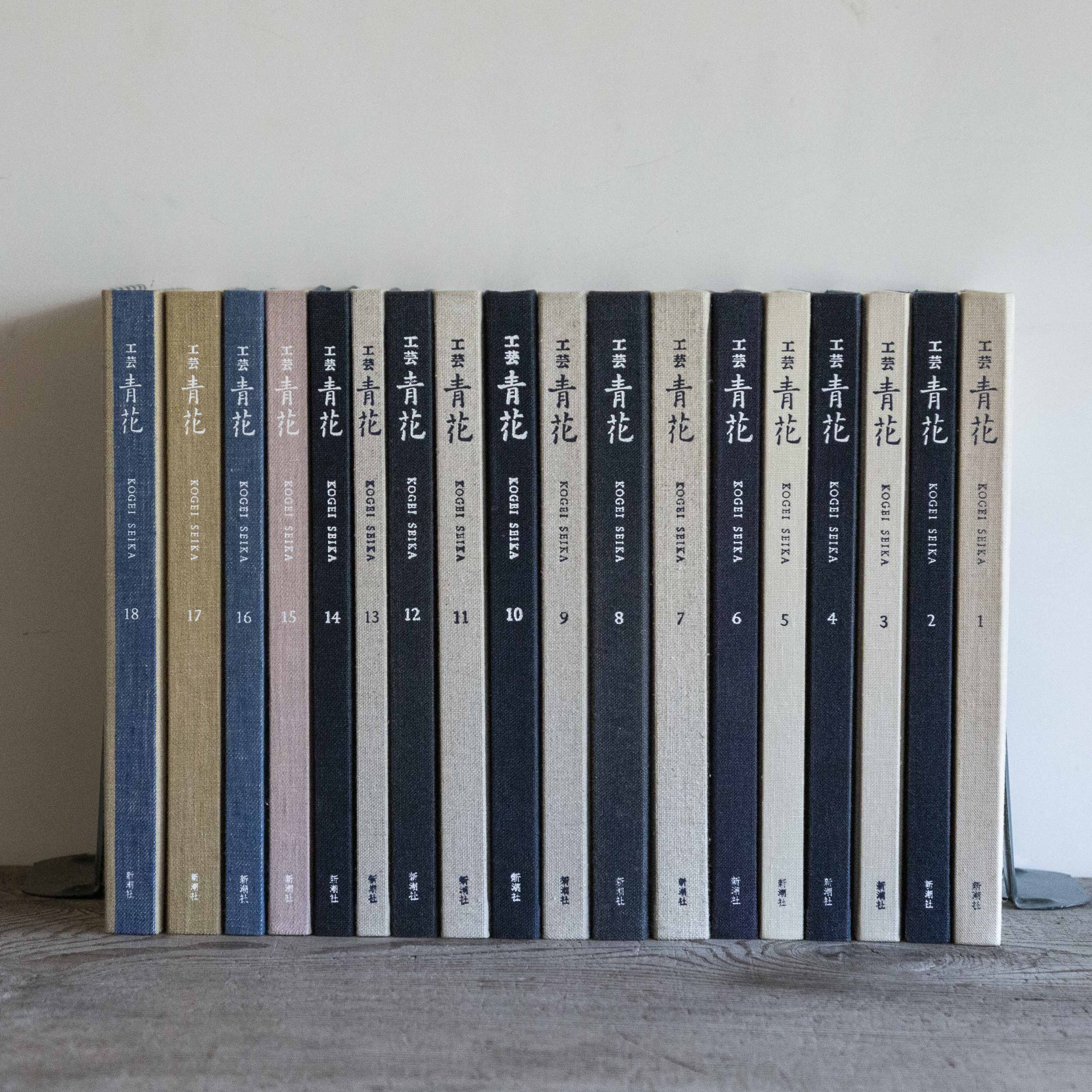
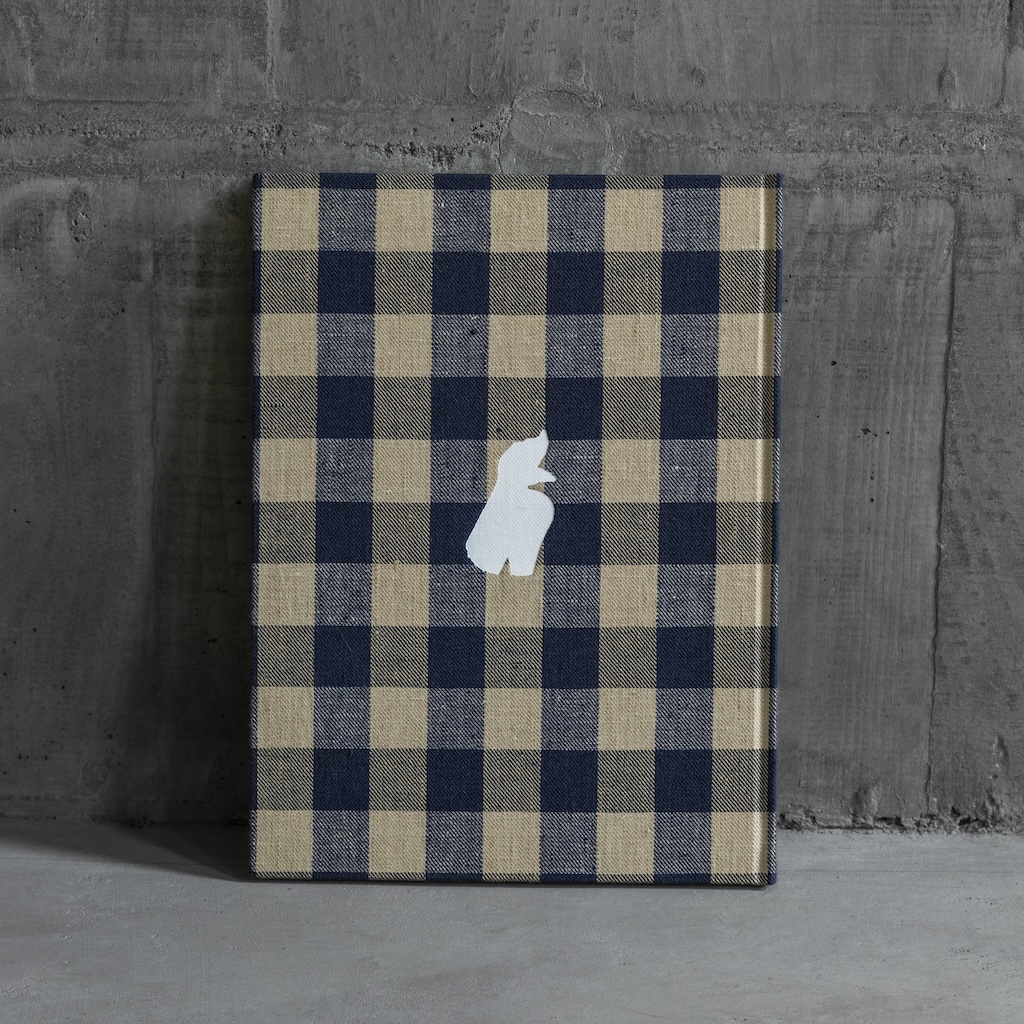
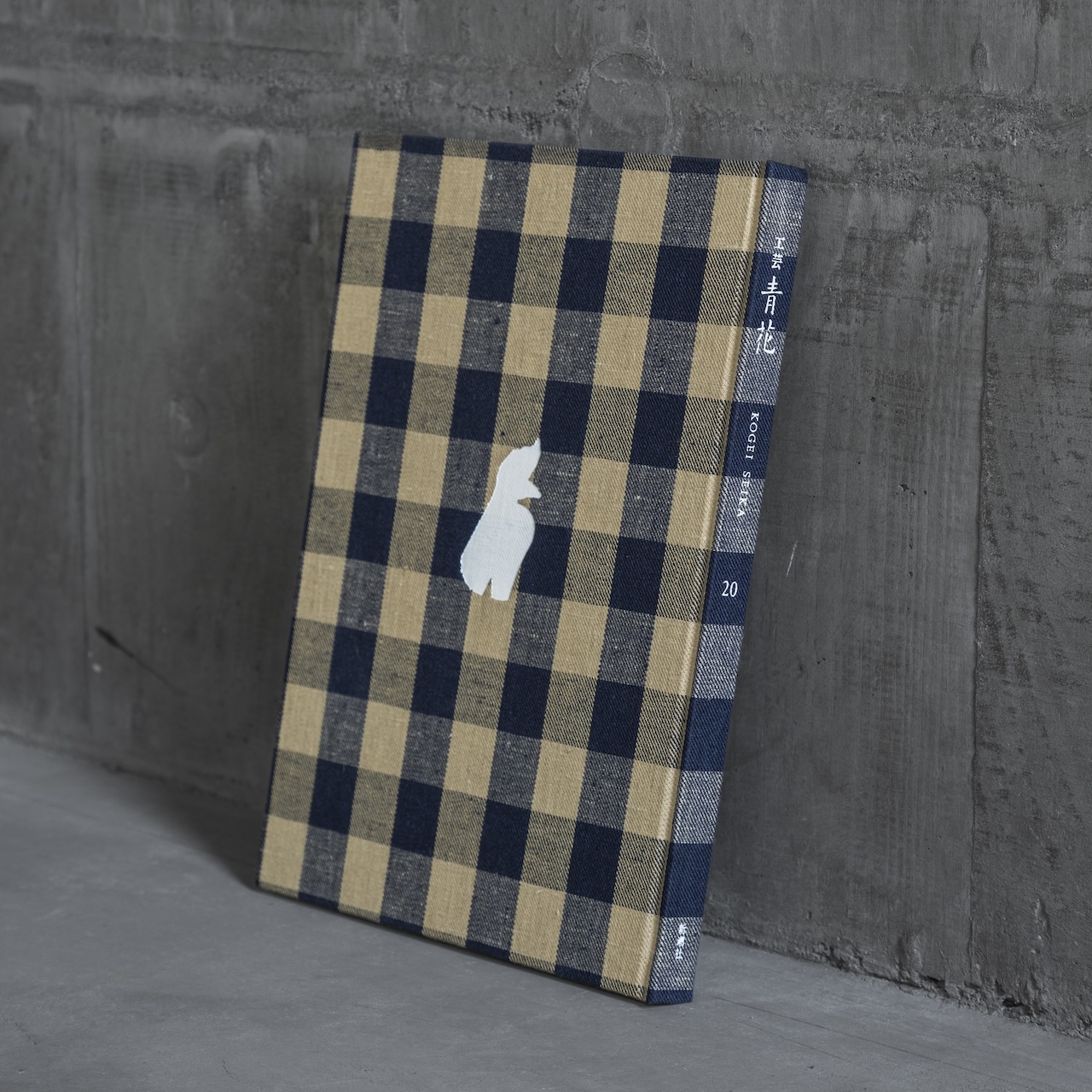
『工芸青花』20号
■2024年9月20日刊
■A4判|45R製麻布張り上製本|見返し手漉和紙(備中)
■カラー152頁|望月通陽の型染絵を貼付したページあり
■限定1200部|14,000円+税
*御購入はこちらから
https://store.kogei-seika.jp/products/kogeiseika-20
Kogei Seika vol.20
■Published in 2024 by Shinchosha, Tokyo
■A4 in size, linen cloth coverd book with endpaper made of Japanese paper
■152 Colour Plates, Frontispiece with a stencil dyed art work by Michiaki Mochizuki
■Each chapter is accompanied by an English summary
■Limited edition of 1200
■14,000 yen (excluding tax)
*To purchase please click
https://store.kogei-seika.jp/products/kogeiseika-20
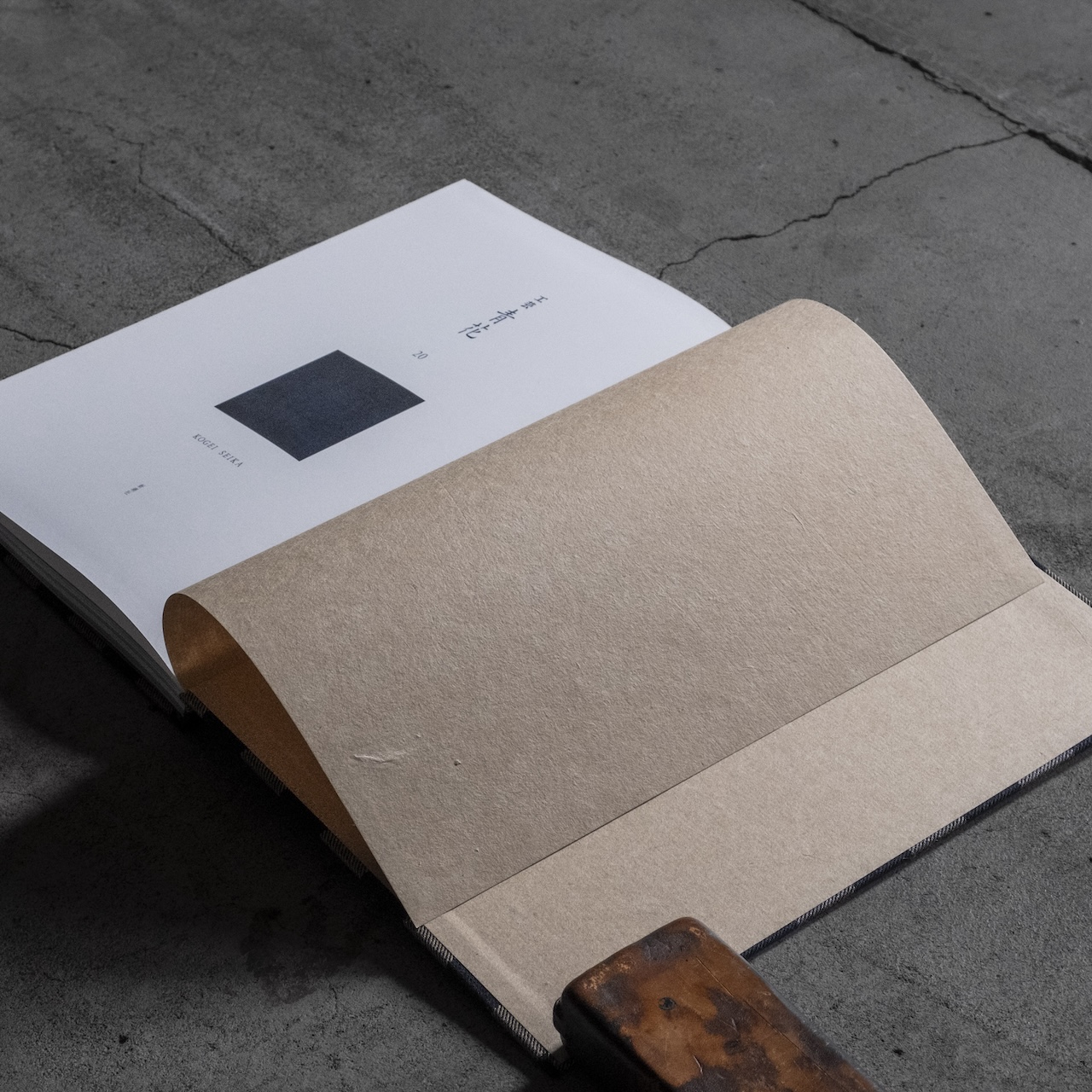
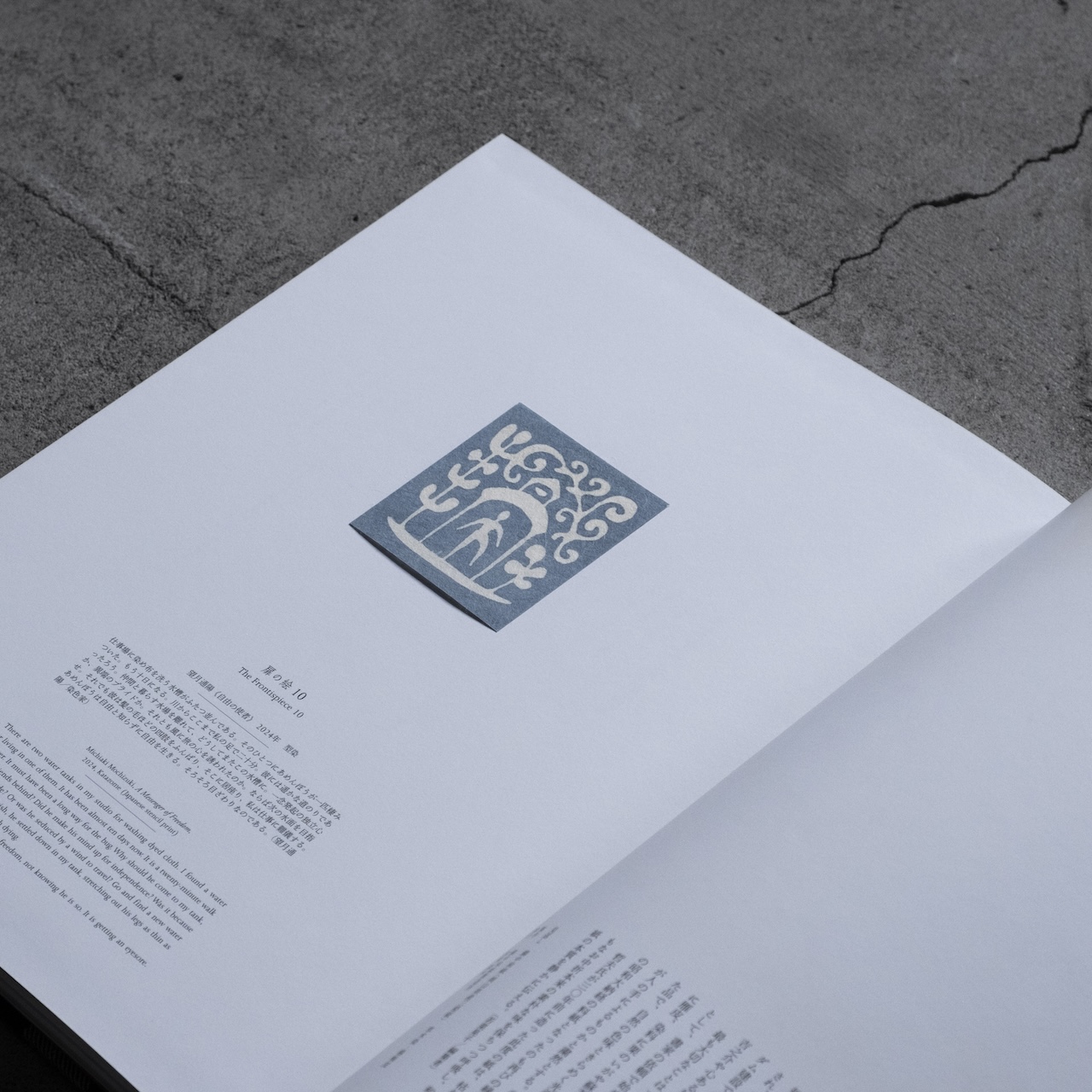
目次 Contents
1|川瀬敏郎と黒田泰蔵
Toshiro Kawase and Taizo Kuroda
・花と器 菅野康晴
・轆轤と虚空 大久保満男
・二つの世界 木本和久
2|スイスのロマネスク ツィリスのザンクト・マルティン聖堂
Romanesque Art in Switzerland, St.Martin in Zillis
・巡礼とアルプス 小澤実
・天井画のなかの海 金沢百枝
3|赤穂緞通
Ako Dantsu, The Carpets from Ako
・海辺の町の絨毯 阪上梨恵
4|瓦
Ancient Roof Tiles of Temples
・古瓦のたのしみ 田中恵子
・日本の瓦小史 前橋重二
連載 Series
・ロベール・クートラスをめぐる断章群14・完 堀江敏幸
精華抄
備中和紙 若菜晃子
扉の絵 望月通陽
1|川瀬敏郎と黒田泰蔵
Toshiro Kawase and Taizo Kuroda
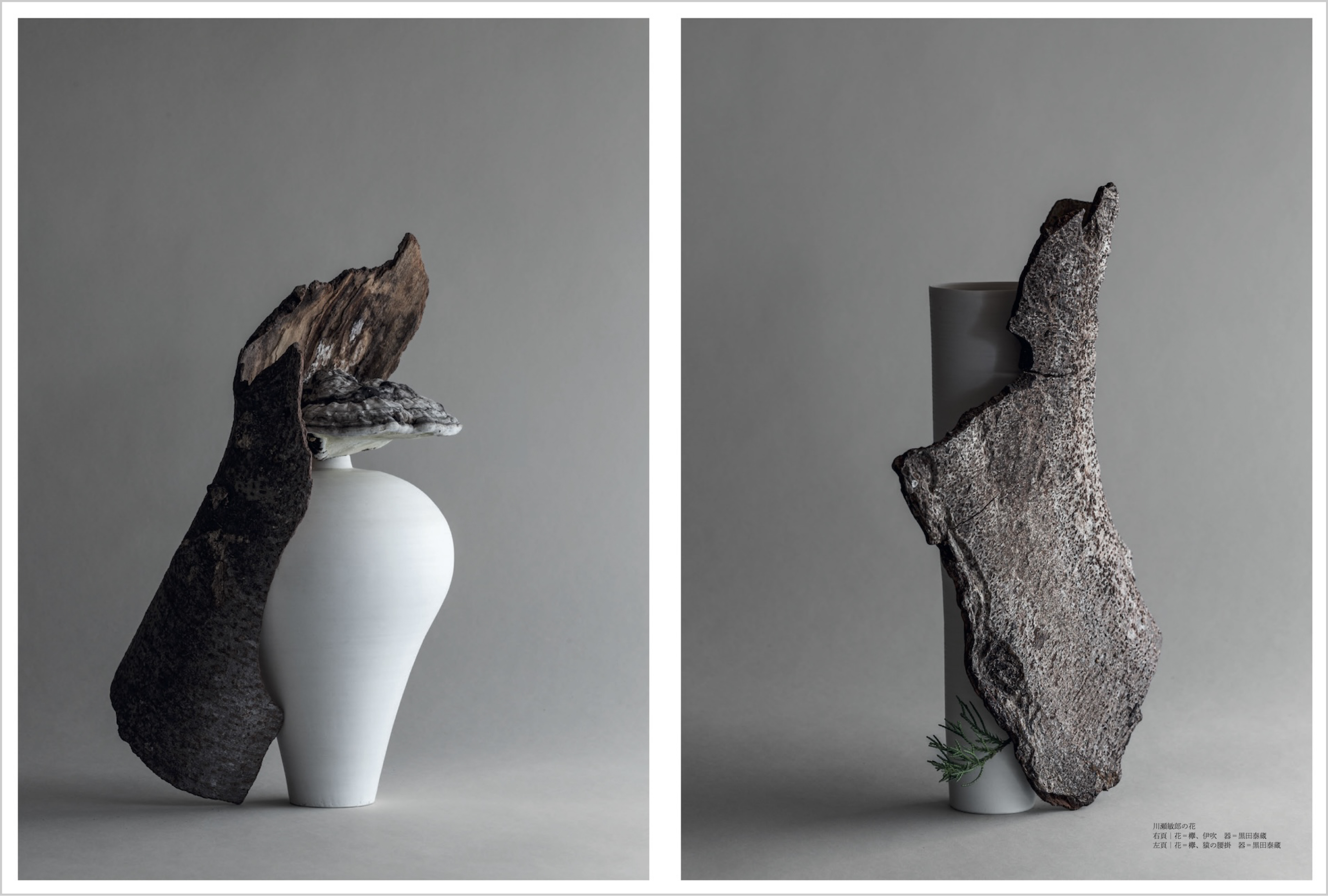
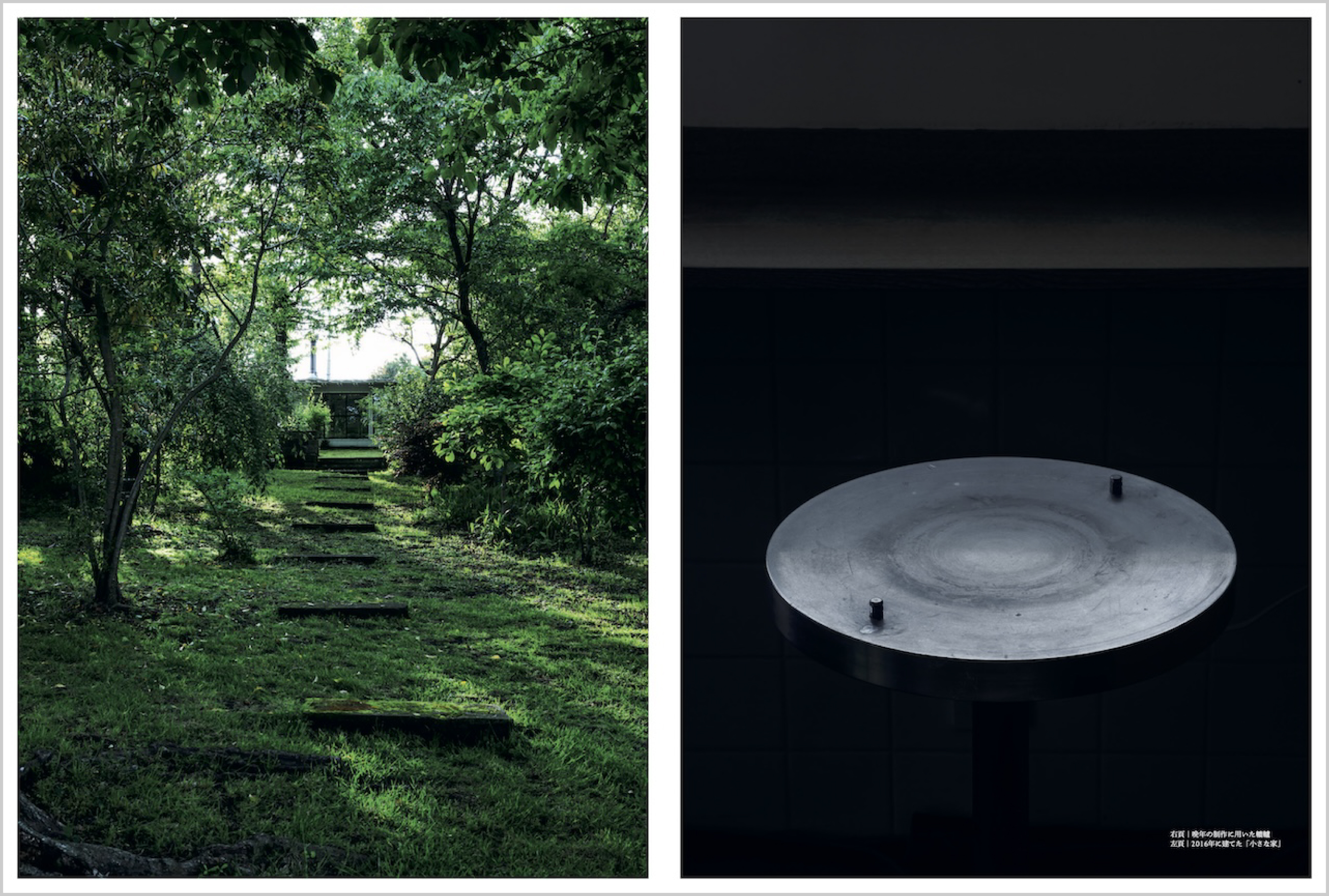
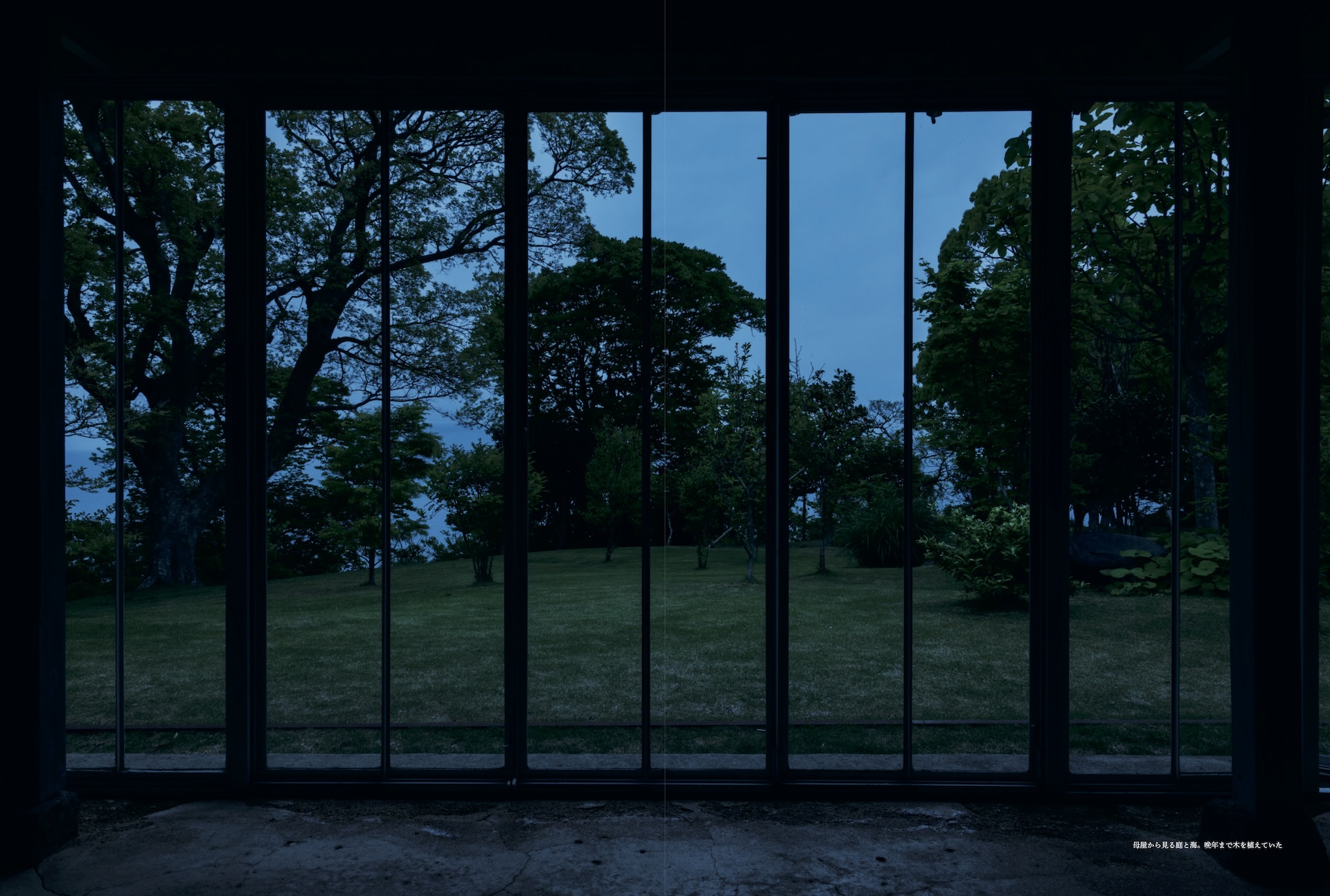
川瀬敏郎(花人。1948年生れ)と黒田泰蔵(陶芸家。1946-2021)。ふたりは花とやきものという、ともにながい歴史をもつ日本文化のふたつのジャンルを、だれの眼にもわかるかたちで更新しました。それは様式ばかりでなく、川瀬さんは「たてはな」と「なげいれ」、黒田さんは「轆轤」と「白磁」という概念を再創造したといえます。
黒田さんの器にいけるというこの特集は、川瀬さんの案でした。ふたりの関係は(川瀬さんが黒田作品を実見したときからかぞえれば)30年余になります。両者の交流については見聞きしたことを短文にまとめました[15頁]。川瀬さんにとって黒田さんがとくべつな作家だったことはあきらかですが、そこに人づきあいという要素はほぼありません(川瀬さんはつねにそうです)。今回の花は、黒田白磁とはなにか、だけでなく、現代作家の器にいけるとはどういうことか、という問いでもあったように思います。
特集後半は伊豆の黒田邸を取材したものです。主なき庭とコレクションに、故人の視線をしのびました。文章は、黒田さんが信頼していた友ふたりによる惜別の辞です。S
Toshiro Kawase (Ikebana Artist, 1948-) and Taizo Kuroda (Ceramist, 1946-2021). Those two renewed the long-standing genres of Japanese culture: Ikebana and ceramics. They renovated the styles and the concepts: Kawase changed ideas of the ‘tatehana’ (formal style) and ‘nageire’ (casual style), and Kuroda altered the notion of ‘potter’s wheel’ and ‘white porcelain’.
The first half of the article features the occasion when Kawase used Kuroda’s porcelain for his flowers. It was Kawase’s idea. They were friends for over thirty years (counting from when Kawase set his eyes on Kuroda’s work).
I have written a summary of their friendly intercourse [p.15]. Kuroda was an exceptional artist for Kawase, though there is almost no element of social interaction (as is always the case with Kawase). The challenge for Kawase was not only in arranging flowers in white porcelains but also in what it means to arrange flowers on contemporary artists’ vessels.
The second half of the article is a report on the Kuroda residence in Izu. The garden and collection evoked the master’s eye. Two good friends of Kuroda expressed their sorrow at parting. (S)
2|スイスのロマネスク ツィリスのザンクト・マルティン聖堂
Romanesque Art in Switzerland, St.Martin in Zillis
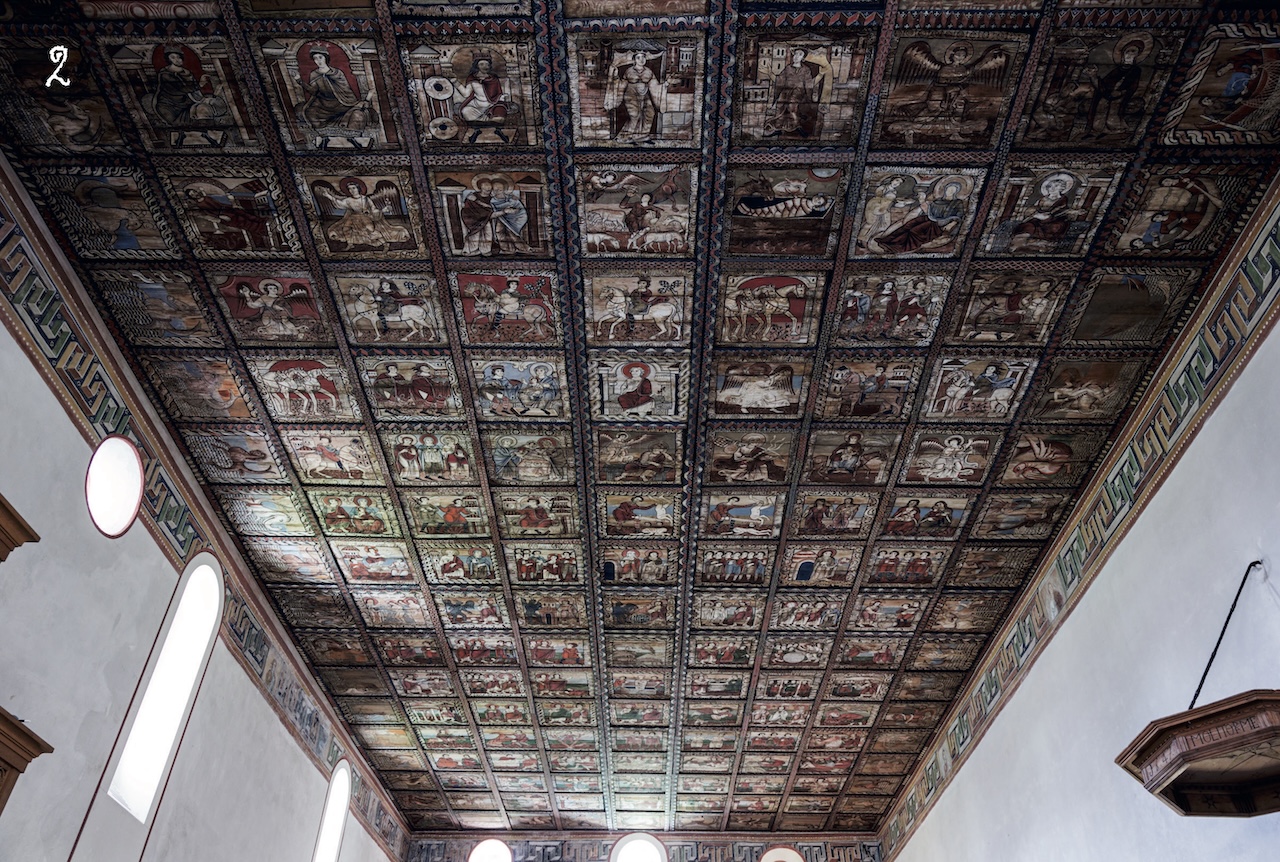
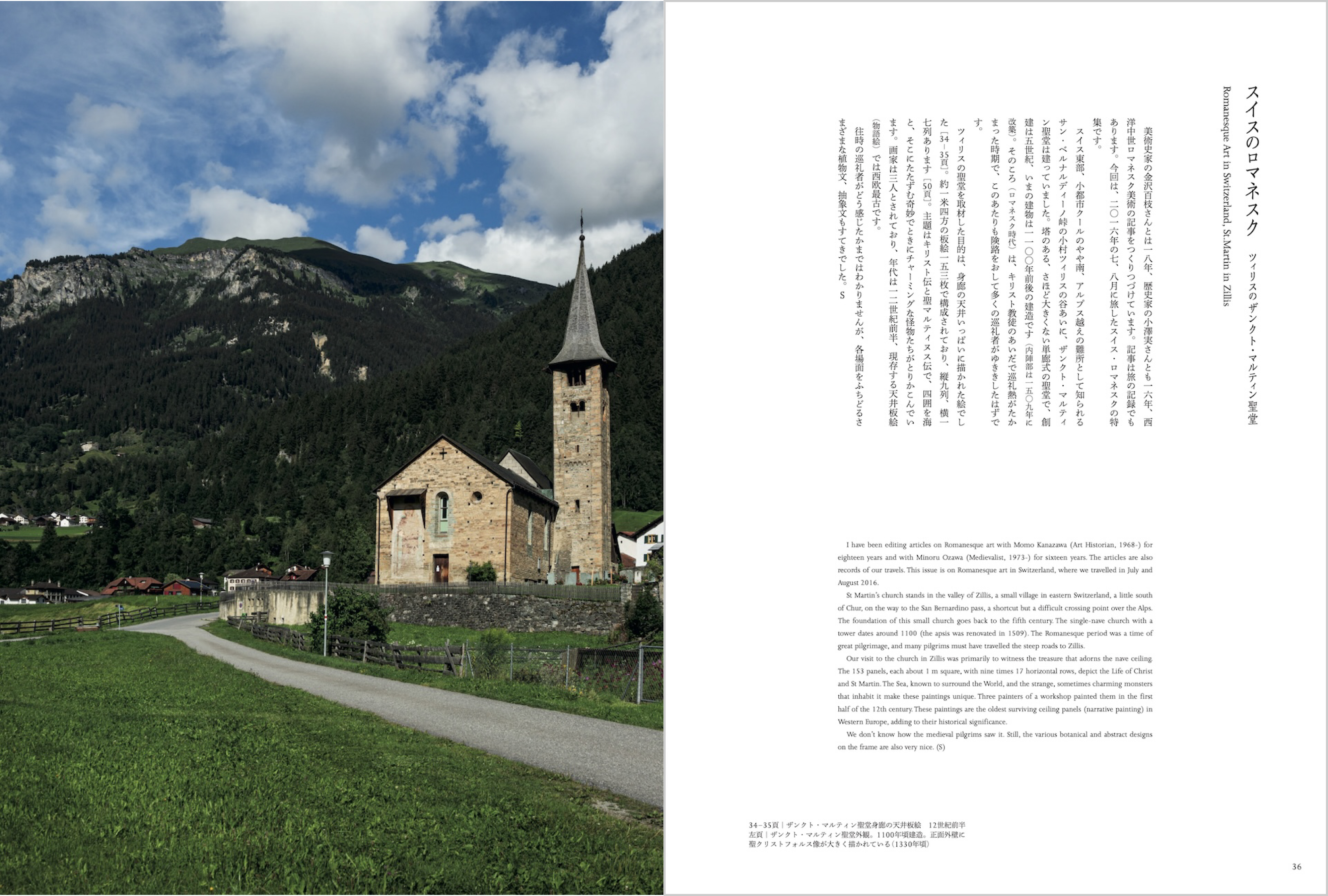
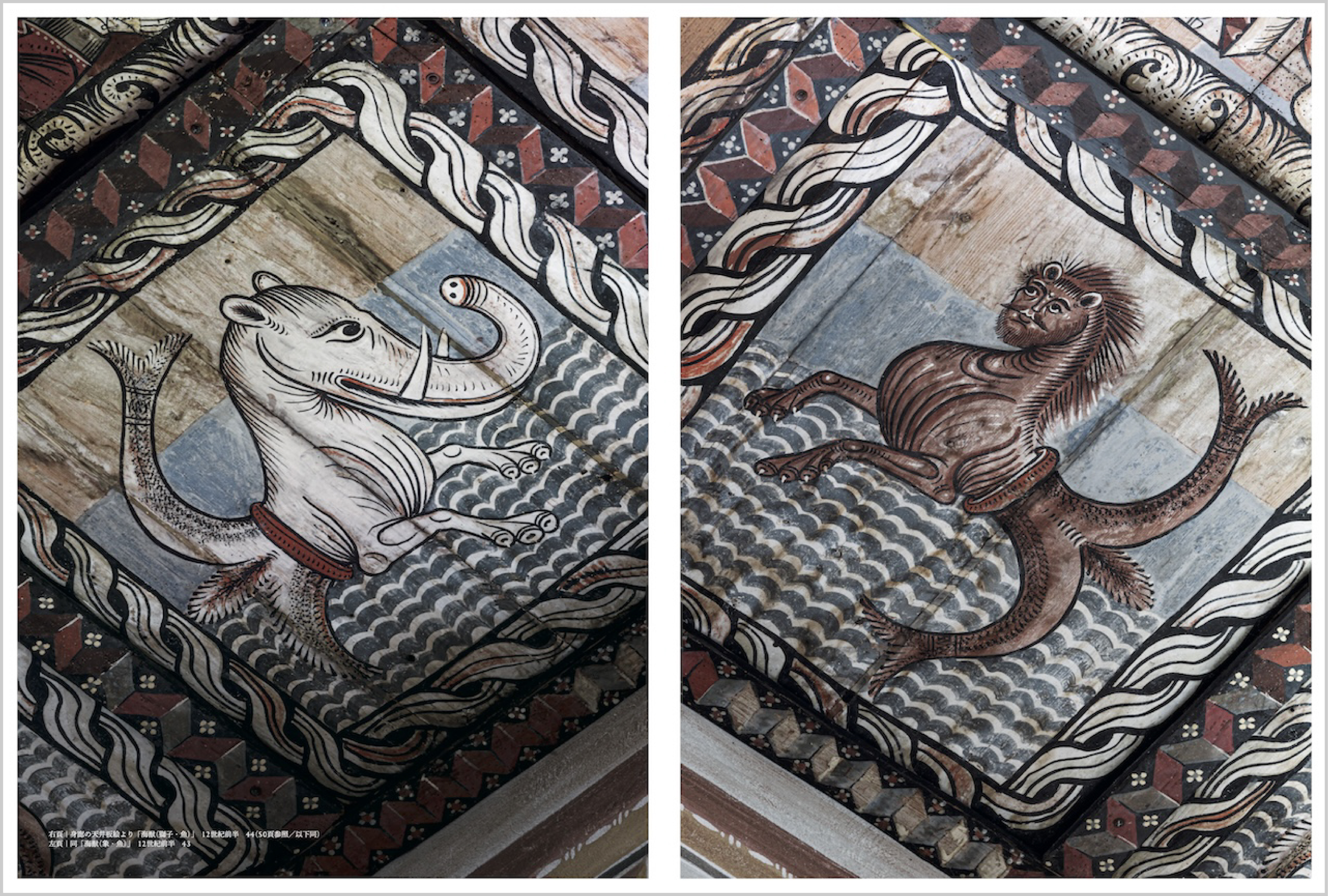
美術史家の金沢百枝さんとは18年、歴史家の小澤実さんとも16年、西洋中世ロマネスク美術の記事をつくりつづけています。記事は旅の記録でもあります。今回は、2016年の7、8月に旅したスイス・ロマネスクの特集です。
スイス東部、小都市クールのやや南、アルプス越えの難所として知られるサン・ベルナルディーノ峠の小村ツィリスの谷あいに、ザンクト・マルティン聖堂は建っていました。塔のある、さほど大きくない単廊式の聖堂で、創建は5世紀、いまの建物は1100年前後の建造です(内陣部は1509年に改築)。そのころ(ロマネスク時代)は、キリスト教徒のあいだで巡礼熱がたかまった時期で、このあたりも険路をおして多くの巡礼者がゆききしたはずです。
ツィリスの聖堂を取材した目的は、身廊の天井いっぱいに描かれた絵でした[34-35頁]。約1米四方の板絵153枚で構成されており、縦9列、横17列あります[50頁]。主題はキリスト伝と聖マルティヌス伝で、四囲を海と、そこにたたずむ奇妙でときにチャーミングな怪物たちがとりかこんでいます。画家は3人とされており、年代は12世紀前半、現存する天井板絵(物語絵)では西欧最古です。
往時の巡礼者がどう感じたかまではわかりませんが、各場面をふちどるさまざまな植物文、抽象文もすてきでした。S
I have been editing articles on Romanesque art with Momo Kanazawa (Art Historian, 1968-) for eighteen years and with Minoru Ozawa (Medievalist, 1973-) for sixteen years. The articles are also records of our travels. This issue is on Romanesque art in Switzerland, where we travelled in July and August 2016.
St Martin’s church stands in the valley of Zillis, a small village in eastern Switzerland, a little south of Chur, on the way to the San Bernardino pass, a shortcut but a difficult crossing point over the Alps. The foundation of this small church goes back to the fifth century. The single-nave church with a tower dates around 1100 (the apsis was renovated in 1509). The Romanesque period was a time of great pilgrimage, and many pilgrims must have travelled the steep roads to Zillis.
Our visit to the church in Zillis was primarily to witness the treasure that adorns the nave ceiling. The 153 panels, each about 1 m square, with nine times 17 horizontal rows, depict the Life of Christ and St Martin. The Sea, known to surround the World, and the strange, sometimes charming monsters that inhabit it make these paintings unique. Three painters of a workshop painted them in the first half of the 12th century. These paintings are the oldest surviving ceiling panels (narrative painting) in Western Europe, adding to their historical significance.
We don’t know how the medieval pilgrims saw it. Still, the various botanical and abstract designs on the frame are also very nice. (S)
3|赤穂緞通
Ako Dantsu, The Carpets from Ako
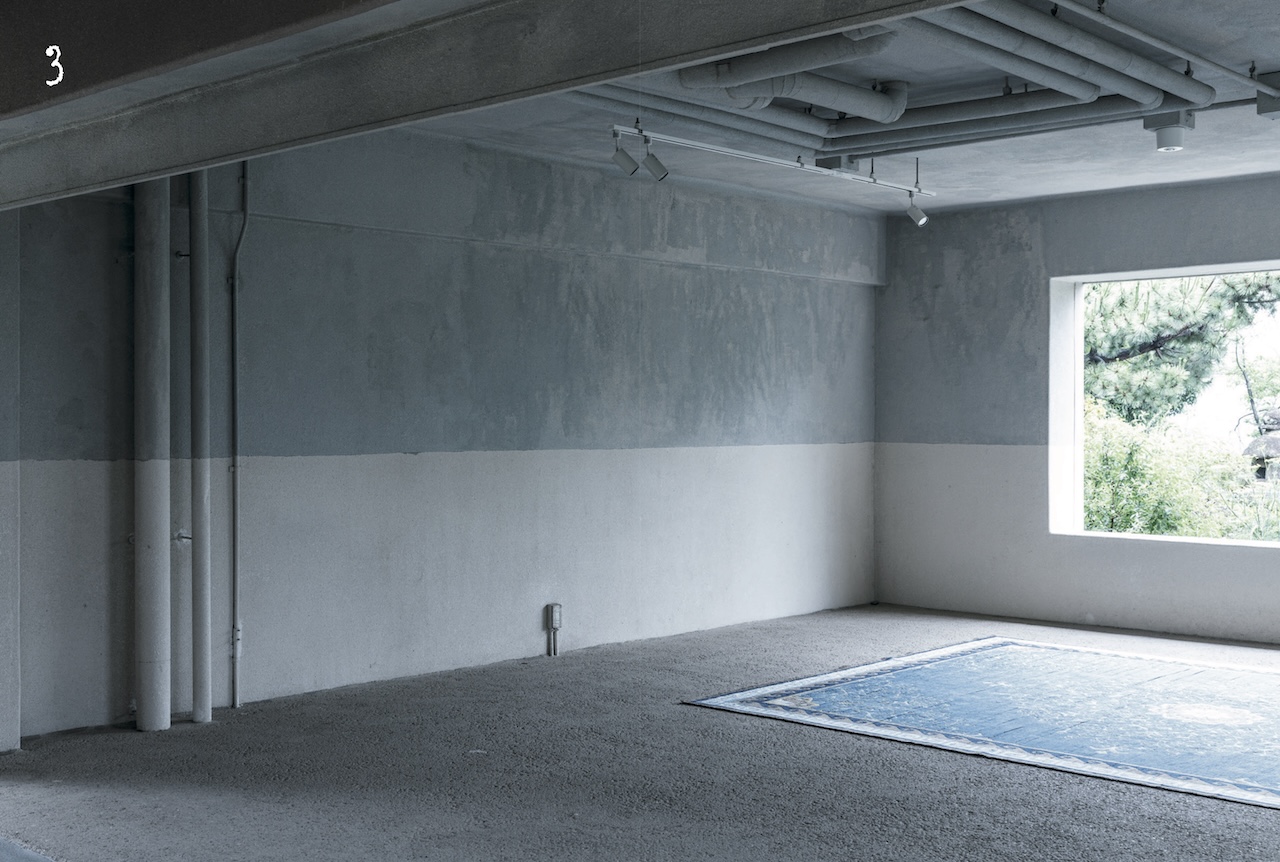
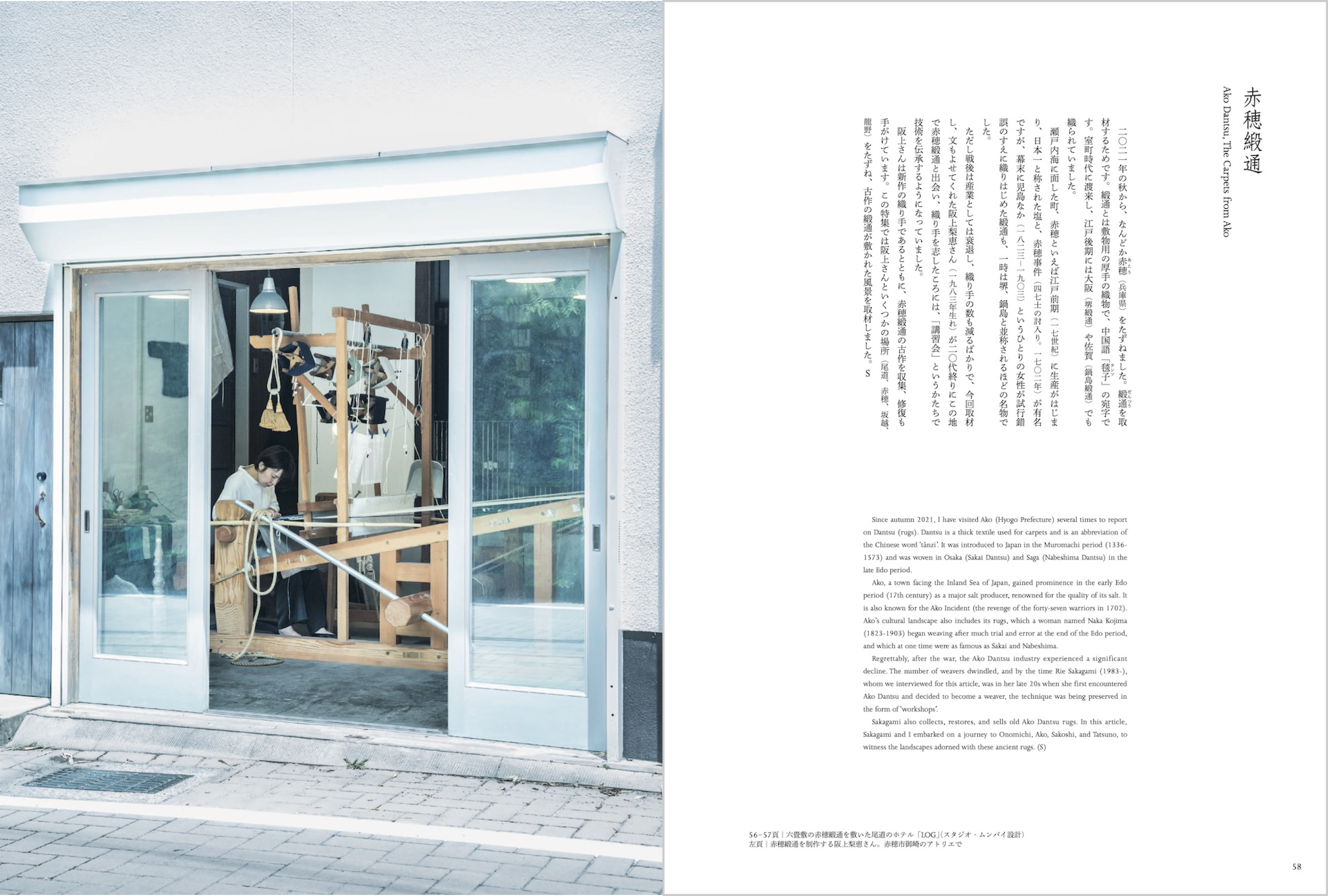
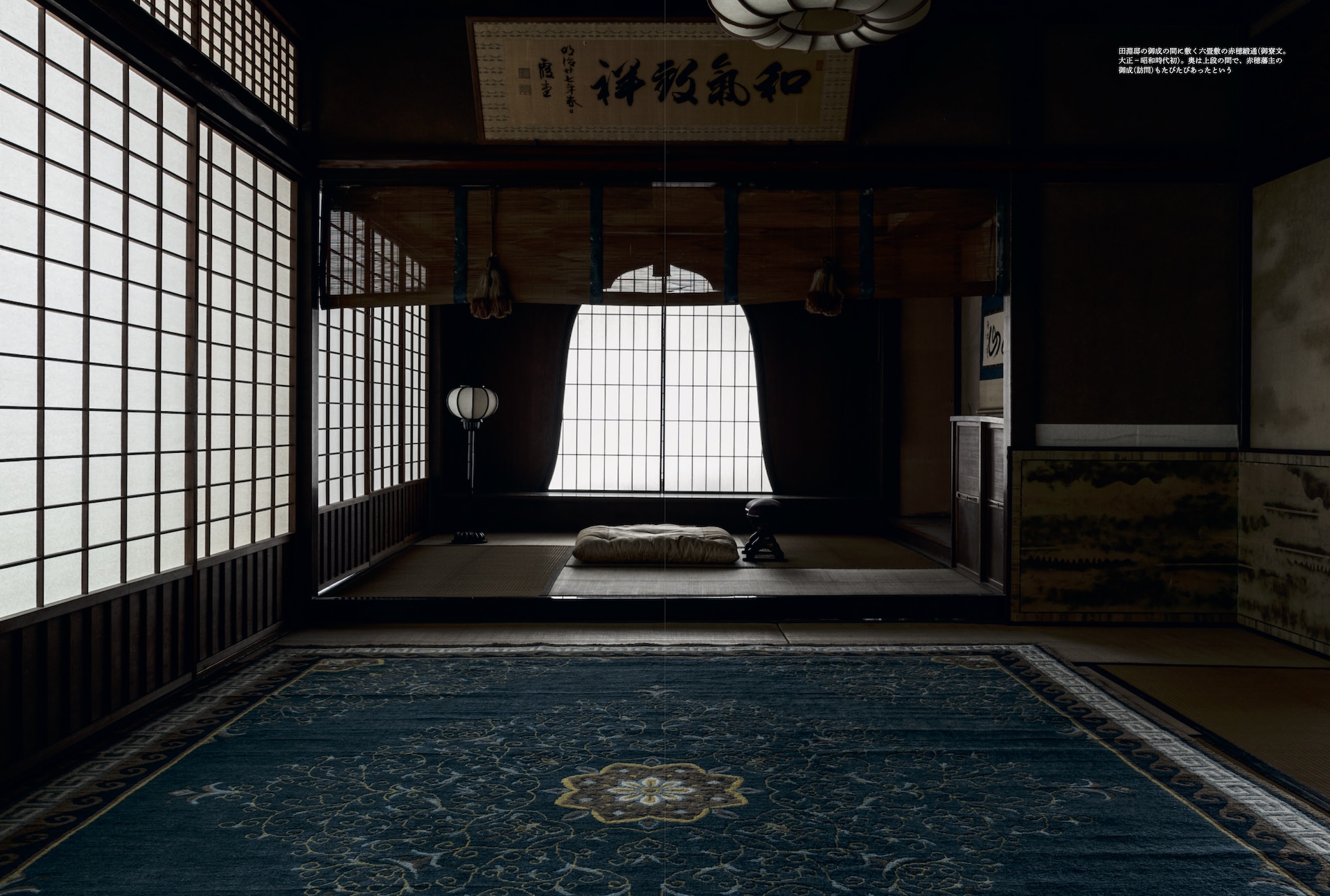
2021年の秋から、なんどか赤穂(兵庫県)をたずねました。緞通を取材するためです。緞通とは敷物用の厚手の織物で、中国語「毯子(タンツ)」の宛字です。室町時代に渡来し、江戸後期には大阪(堺緞通)や佐賀(鍋島緞通)でも織られていました。
瀬戸内海に面した町、赤穂といえば江戸前期(17世紀)に生産がはじまり、日本一と称された塩と、赤穂事件(四七士の討入り。1702年)が有名ですが、幕末に児島なか(1823-1903)というひとりの女性が試行錯誤のすえに織りはじめた緞通も、一時は堺、鍋島と並称されるほどの名物でした。
ただし戦後は産業としては衰退し、織り手の数も減るばかりで、今回取材し、文もよせてくれた阪上梨恵さん(1983年生れ)が20代終りにこの地で赤穂緞通と出会い、織り手を志したころには、「講習会」というかたちで技術を伝承するようになっていました。
阪上さんは新作の織り手であるとともに、赤穂緞通の古作を収集、修復も手がけています。この特集では阪上さんといくつかの場所(尾道、赤穂、坂越、龍野)をたずね、古作の緞通が敷かれた風景を取材しました。S
Since autumn 2021, I have visited Ako (Hyogo Prefecture) several times to report on Dantsu (rugs). Dantsu is a thick textile used for carpets and is an abbreviation of the Chinese word ‘tănzi’. It was introduced to Japan in the Muromachi period (1336-1573) and was woven in Osaka (Sakai Dantsu) and Saga (Nabeshima Dantsu) in the late Edo period.
Ako, a town facing the Inland Sea of Japan, gained prominence in the early Edo period (17th century) as a major salt producer, renowned for the quality of its salt. It is also known for the Ako Incident (the revenge of the forty-seven warriors in 1702). Ako’s cultural landscape also includes its rugs, which a woman named Naka Kojima (1823-1903) began weaving after much trial and error at the end of the Edo period, and which at one time were as famous as Sakai and Nabeshima.
Regrettably, after the war, the Ako Dantsu industry experienced a significant decline. The number of weavers dwindled, and by the time Rie Sakagami (1983-), whom we interviewed for this article, was in her late 20s when she first encountered Ako Dantsu and decided to become a weaver, the technique was being preserved in the form of ‘workshops’.
Sakagami also collects, restores, and sells old Ako Dantsu rugs. In this article, Sakagami and I embarked on a journey to Onomichi, Ako, Sakoshi, and Tatsuno, to witness the landscapes adorned with these ancient rugs. (S)
4|瓦
Ancient Roof Tiles of Temples
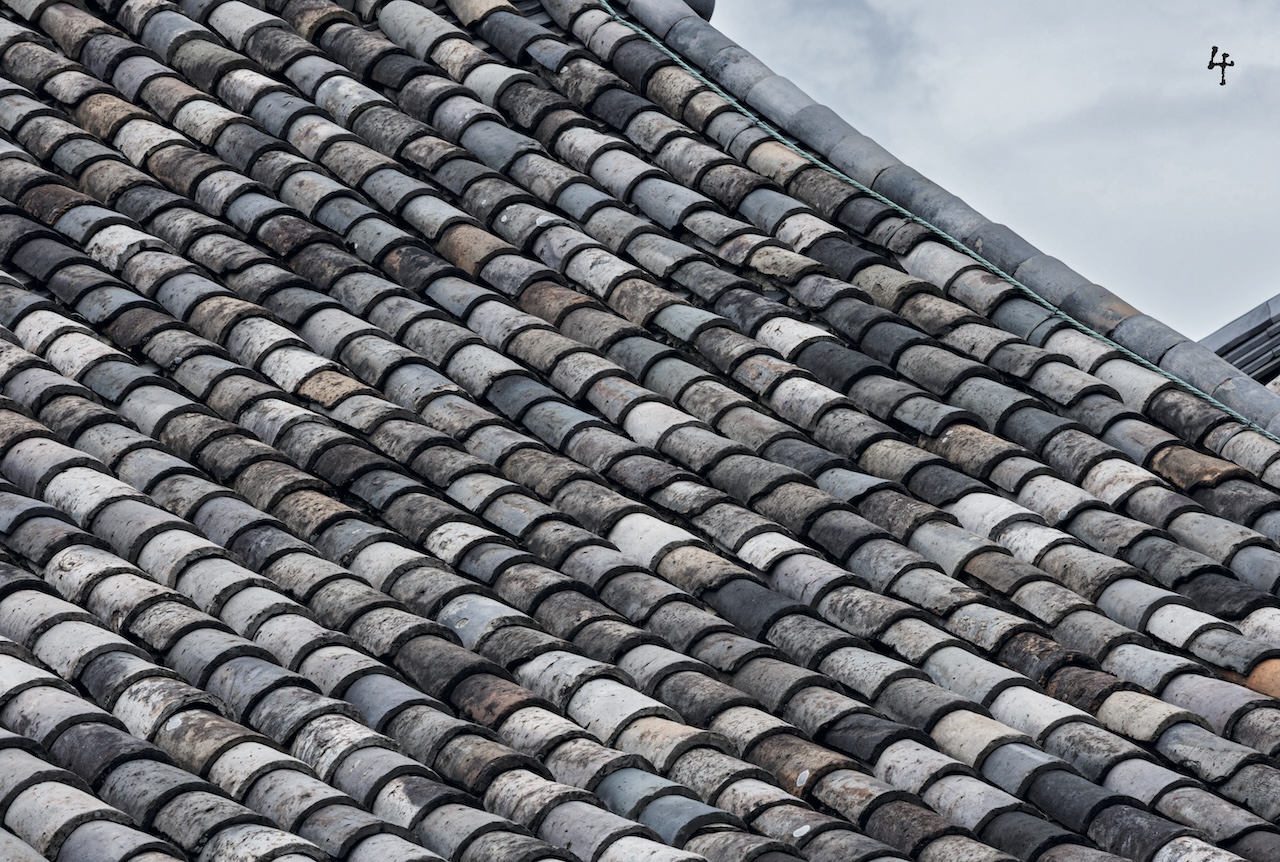
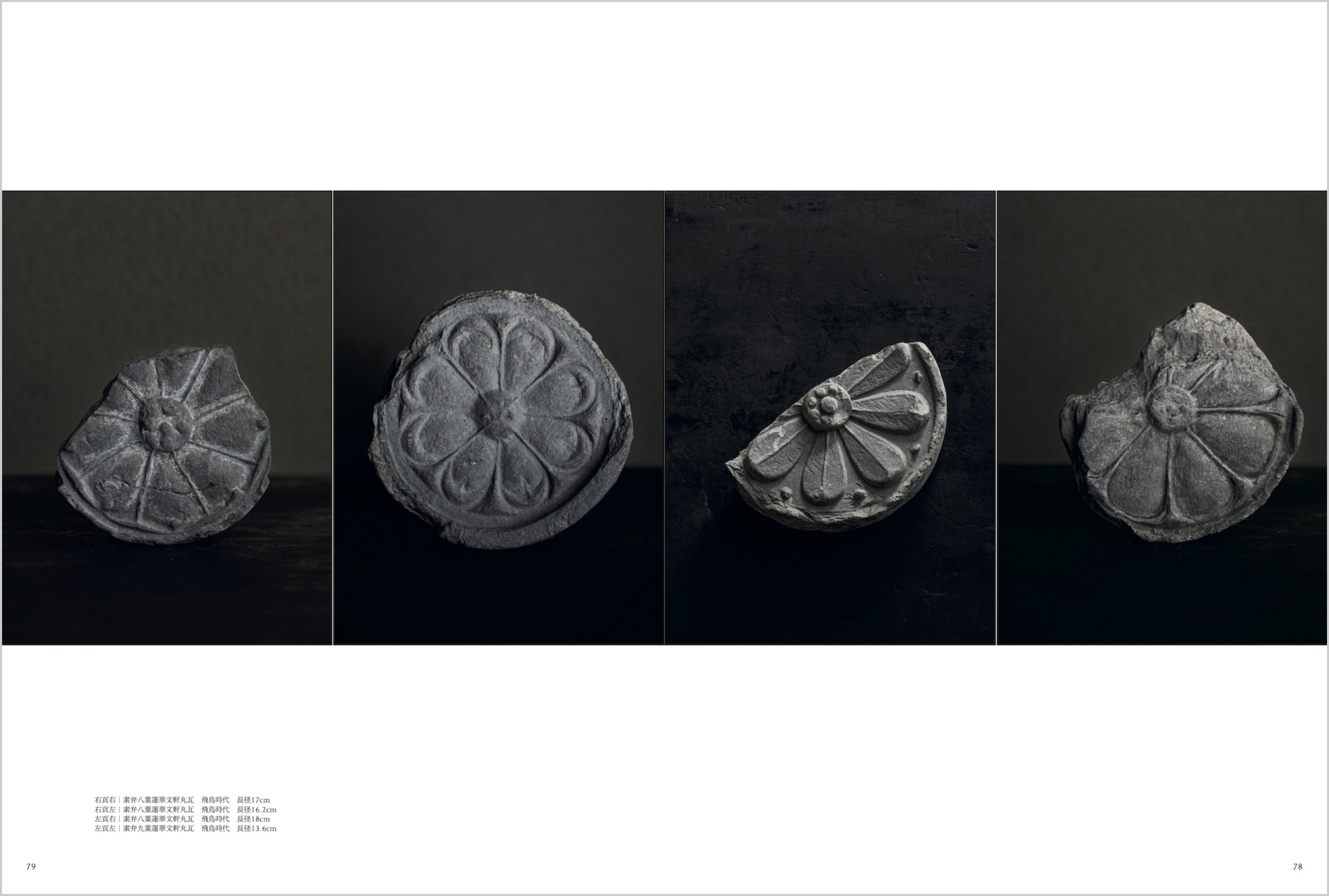

飛鳥、白鳳、奈良時代の作を主に、寺院の屋根に葺かれていた古瓦の特集です。瓦といっても無文の丸瓦、平瓦ではなく、瓦当部分に文様のある軒丸瓦、軒平瓦をとりあげています。そうした古瓦がいまも屋根にありつづけている例はほぼないので、下記の3者の収集品を撮影、掲載しました。
山路天酬(埼玉県・あさか大師香林寺山主)
常楽寺(長野県)
東大寺龍松院(奈良県)
特集のきっかけは骨董商ふたり、田中恵子さん(古美術陣屋)と小松義宜さん(honogra)でした。ふたりとは『工芸青花』17号特集「無窮亭河瀬虎三郎」の取材で奈良に同道、そのおり古瓦の魅力を説かれ、得心し、記事をつくることになりました。ふたりは右のコレクションの紹介者であり、特集の監修者でもあります。
後半、美術ライターの前橋重二さんによる「日本の瓦小史」的概説も掲載しています。6世紀末の渡来から江戸時代にいたる、製法工法の変遷等の要点をまとめた、他にない読みものと思います。S
This article features the ancient roof tiles from the Asuka, Hakuho, and Nara periods from the temple roofs. Among the various types of roof tiles, we focused on tiles with decorative patterns, round and flat from eaves, not the ones without marks. No examples are known to be still on roofs today, so I photographed the collections listed below.
Yamaji Tenshu (The Head priest of Asaka Daishi Korinji Temple, Saitama Prefecture).
Jorakuji Temple, Nagano Prefecture.
Ryushoin, Tōdai-ji Temple, Nara, Japan.
Two antique dealers, Keiko Tanaka (JINYA Antiques Gallery) and Yoshinari Komatsu (honogra) inspired me of the feature. The two were in Nara for the article ‘Nara and Antiques: Mukyutei, Kawase Torasaburo’ in Kogei Seika No.17, during which they explained the charm of old tiles to me. I was convinced and decided to write an article about them. The two introduced me to the collections of roof tiles and supervised this article for me.
In the latter part of the article, art writer Juji Maehashi provides an overview of Japanese roof tiles. This unique read summarises the main points of the changes in manufacturing and construction methods from the arrival of the tiles at the end of the sixth century to the Edo period. (S)

